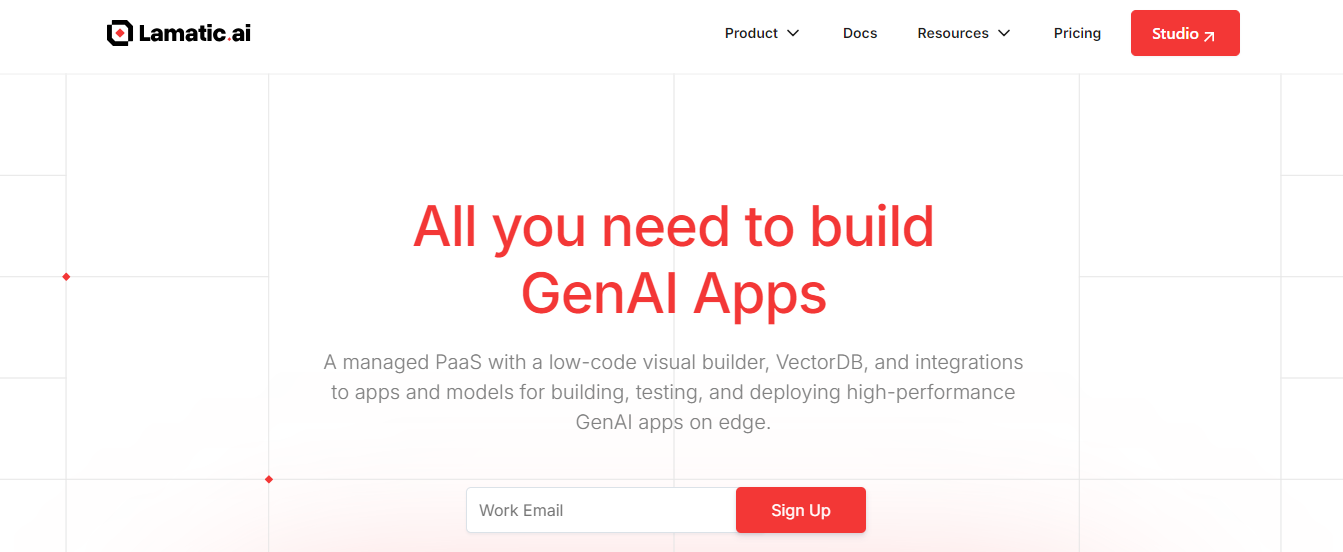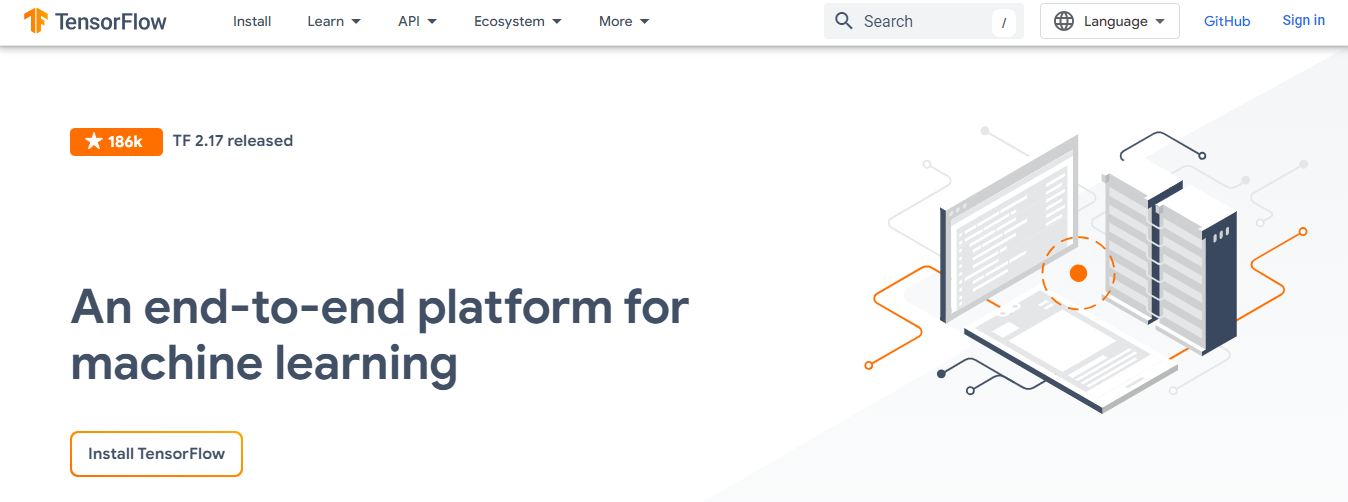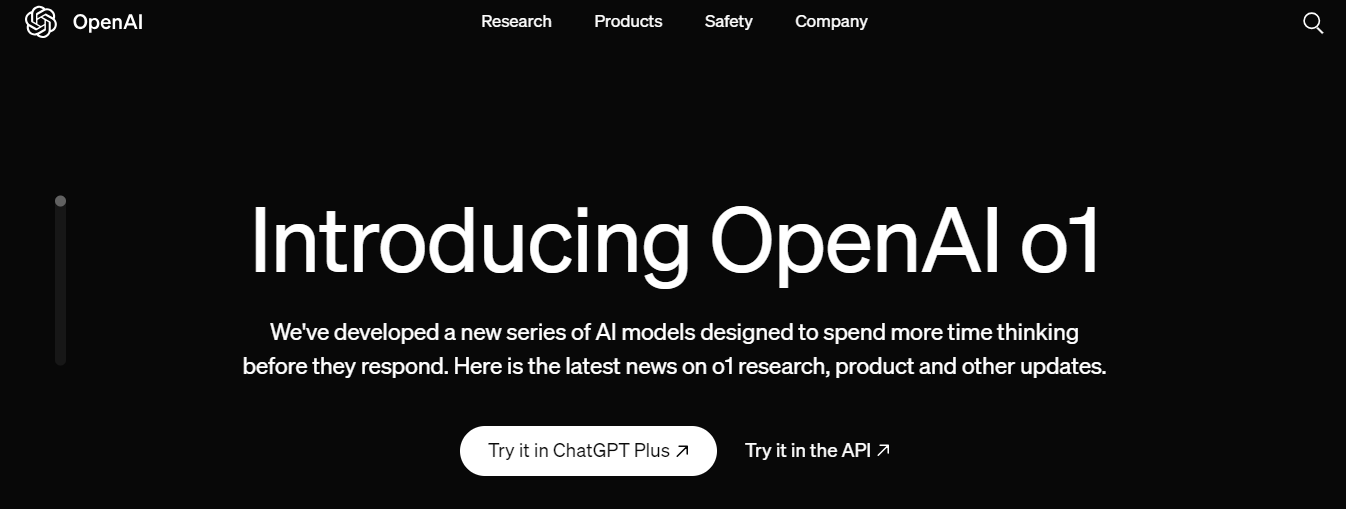uilding artificial intelligence solutions can feel overwhelming, especially when just starting. From designing models to working with unstructured data, there are many moving parts to consider. The good news is that AI frameworks can help reduce the complexity of building AI applications and accelerate innovation. If you're unsure how to build AI effectively, the right tools and frameworks can make a world of difference. The good news is that AI frameworks can help reduce the complexity of building AI applications and accelerate innovation. This article will explore how proven AI frameworks can help you achieve your goals, like building and scaling intelligent applications faster and more efficiently.
Lamatic's generative AI tech stack offers a valuable solution to help you reach your objectives. With our AI framework, you can build and scale intelligent applications faster and more efficiently while reducing complexity and accelerating innovation.
Why Choose an AI Framework?

Developers have a lot on their plates. They are tasked with building new software applications and need to ensure these programs are:
- Efficient
- Secure
- User-friendly
AI frameworks help lighten the load by speeding up development time. They do this by providing pre-built components that allow developers to streamline the process of building AI functionality into applications. Instead of starting from scratch to create intelligent software, developers can use frameworks to reduce the time needed to get a project off the ground.
AI Frameworks Make AI Development More Affordable
AI frameworks can significantly reduce the costs of developing intelligent software. They do this by eliminating the need for manual coding to create AI functionalities and allowing developers to use existing components to build custom applications.
This helps organizations save money and build applications faster, allowing them to realize their return on investment sooner.
AI Frameworks Provide Structure to Complex Projects
AI projects can be complex and daunting. The proper framework can help tame the chaos by providing structure to your next intelligent application development project. Frameworks come with a standard set of tools and libraries that allow developers to implement AI algorithms consistently.
This helps simplify the process and makes integrating AI functionality into applications and platforms easier.
AI Frameworks Are Efficient and Save Time
AI frameworks are a tremendous timesaver for modern software development. They simplify creating, testing, and deploying applications. They also provide a complete development environment with:
- Debugging tools
- Testing harnesses
- Data visualization capabilities
This speeds up the development process as developers can act quickly without manually compiling and debugging each code section. Additionally, AI frameworks offer a wide variety of pre-built models.
Related Reading
- Gen AI vs AI
- GenAI Applications
- Generative AI Customer Experience
- Generative AI Automation
- Generative AI Risks
- How to Create an AI App
- AI Product Development
- GenAI Tools
- Enterprise Generative AI Tools
- Generative AI Development Services
Top 25 AI Frameworks and Libraries
1. Lamatic

Lamatic offers a managed generative AI tech stack. Our solution provides:
- Managed GenAI middleware
- Custom GenAI API (GraphQL)
- Low-code agent builder
- Automated GenAI workflow (CI/CD)
- GenOps (DevOps for GenAI)
- Edge deployment via Cloudflare workers
- Integrated vector database (Weaviate)
Rapid, Production-Grade GenAI Implementation on the Edge
Lamatic empowers teams to rapidly implement GenAI solutions without accruing tech debt. Our platform automates workflows and ensures production-grade deployment on the edge, enabling fast, efficient GenAI integration for products needing swift AI capabilities.
Start building GenAI apps for free today with our managed generative AI tech stack.
2. PyTorch

PyTorch is an open-source machine learning library known for its dynamic computational graph and is favored by researchers. The framework is excellent for prototyping and experimentation. Growing community support empowers it, with tools like PyTorch built on the library. PyTorch has swiftly become one of the most widely used frameworks applicable in various applications.
3. Scikit-Learn

Scikit-Learn is a Python library for machine learning. It is open-source and beginner-friendly, offering data mining and machine learning capabilities, comprehensive documentation, and tutorials. Scikit-Learn is well-suited for smaller projects and quick model prototyping but may not be the best choice for deep learning tasks.
4. TensorFlow

TensorFlow is an open-source deep learning framework developed by Google. It's renowned for its flexibility and scalability, making it suitable for many AI applications. This framework has a large and active community and extensive documentation and tutorials. It also supports deployment on various platforms. Nevertheless, the learning curve of TensorFlow can be steep for beginners.
5. Keras

Keras is an open-source high-level neural networks API that runs on top of TensorFlow or other frameworks. It is user-friendly and easy to learn, simplifying the process of operating with deep learning models. Moreover, it's ideal for quick prototyping. Nonetheless, you should remember that Keras may lack some advanced features for complex tasks.
6. LangChain

LangChain has recently gained popularity as a large language model (LLM) application framework. It allows developers to build applications using LLMs with features like model I/O, data connections, chains, memory, agents, and callbacks. LangChain integrates with various tools, including:
- OpenAI
- Hugging Face Transformers
It is used for diverse applications like chatbots, document summarization, and interacting with APIs.
7. Hugging Face

Hugging Face specializes in easy-to-use AI tools. It is mainly known for its "Transformers" library, which helps in advanced machine learning tasks like language processing and creating chatbots. Hugging Face also provides tools for generating images and sounds, efficient ways to handle data in AI models, and simple methods to update large AI models.
They offer web-friendly versions of these tools, making it easier for beginners and experts to experiment with AI in various fields, including natural language processing and computer vision.
8. OpenNN

OpenNN is a tool for creating neural networks, AI that mimic how the human brain works. It's written in C++ and is known for being fast and efficient. OpenNN is used mainly for research and creating AI that learns and makes data-based decisions.
9. OpenAI

OpenAI provides various tools for different AI tasks, including making images or converting text to speech. It's known for its powerful GPT language models that can understand and generate human-like text.
OpenAI's platform is user-friendly, making it easier for people to use advanced AI in their projects, especially for creating AI assistants or tools that interact with users in natural language. Nevertheless, several of the features require a paid premium subscription.
10. PyBrain
PyBrain is an open-source ML library for Python. It provides a flexible and straightforward environment for experimenting with various machine learning algorithms. It is perfect for researchers, educators, and developers looking for a lightweight Python-based framework for exploring machine learning concepts.
Lightweight Tool for Experimentation and Education
It is lightweight and easy to use for experimentation, supporting many machine learning algorithms. PyBrain’s AI library is suitable for educational purposes and rapid prototyping. Still, you should consider that PyBrain has limited documentation and a smaller community than mainstream libraries. It may also lack some advanced features found in other frameworks.
11. IBM Watson

IBM Watson is a suite of AI and machine learning services provided by IBM. It offers tools and solutions for building and deploying AI-powered applications, including natural language processing, computer vision, and predictive analytics. It can be easily integrated with IBM Cloud for seamless deployment.
Furthermore, robust AI capabilities in the IBM Watson suite are backed by IBM's expertise. Nevertheless, the pricing may concern smaller businesses seeking comprehensive AI solutions and consulting services.
12. Microsoft Cognitive Toolkit (CNTK)
The Microsoft Cognitive Toolkit, or CNTK, is a free and open-source deep learning AI framework developed by Microsoft. It's known for its efficiency, especially on multi-GPU systems, and is suitable for research and production deployments. Many researchers, data scientists, and developers working on deep learning projects with access to powerful hardware prefer it because it's highly efficient, particularly for training large models.
It also supports multiple neural network types, including feedforward and recurrent networks, and provides a Python API for ease of use. Nonetheless, Microsoft CNTK may have a steeper learning curve than beginner-friendly frameworks.
13. DL4J (Deeplearning4j)

Deeplearning4j, often abbreviated as DL4J, is an open-source deep learning framework designed explicitly for Java and Scala developers. It provides a comprehensive set of tools for building and deploying deep neural networks in Java-based applications, making it suitable for enterprise-level applications.
The framework also offers support for distributed computing, enabling scalability. The platform includes a wide range of neural network types and pre-processing tools. Nevertheless, it has a smaller community compared to Python-based frameworks.
14. Theano
Theano is an open-source numerical computation AI library for Python. While it's no longer actively developed, it played a significant role in the early days of deep learning. Why so? For starters, it had an efficient symbolic mathematics library. Theano was also suitable for educational purposes. Although some existing projects may still use it, it's no longer actively maintained or updated.
15. MXNet

MXNet is an open-source deep learning framework known for its efficiency and scalability. It is efficient for both research and production. It has a growing community and industry support, but its community is smaller compared to TensorFlow and PyTorch.
16. Caffe

Caffe is an open-source deep learning framework. It's known for its speed and efficiency in computer vision tasks, supporting a variety of deep learning architectures. Caffe is optimized for computer vision applications and is excellent for deploying on edge devices. But when choosing it, you should consider its limited flexibility for non-vision tasks.
17. XGBoost

This is an open-source gradient boosting framework known for its efficiency and performance. Data practitioners working with structured data and classification/regression problems often choose it. This AI framework excels in structured data tasks and is widely used in data science competitions.
XGBoost is known for its exceptional performance on tabular data. The framework supports various well-maintained and actively developed programming languages. Still, you should understand that XGBoost is not designed for deep learning tasks.
18. LightGBM

LightGBM, developed by Microsoft, is another gradient boosting framework that excels in speed and efficiency, particularly with large datasets. It is designed to be highly scalable and supports parallel and GPU learning. LightGBM’s ability to handle large-scale data with lightning speed makes it a valuable tool for engineers working with high-dimensional data.
19. Apache Mahout

Apache Mahout is an open-source tool for big data tasks like mining and machine learning. It allows applications to analyze large data volumes in a relatively short period. It also enables evolutionary programming, as Mahout comes with distributed function capabilities. It is developed in Java and Scala.
Apache Mahout uses Scala DSL, which makes it easy to express mathematical ideas so that you can describe more things clearly and easily.
20. PaddlePaddle

PaddlePaddle is designed for researchers and developers and comes with various pre-made models and tools for tasks like understanding language and processing images. It simplifies the entire AI development pipeline with tools for data processing, model training, and deployment.
21. OpenCV

OpenCV (Open Source Computer Vision Library) is a versatile open-source computer vision and machine learning software library. As one of the top AI frameworks and libraries, OpenCV provides developers with a comprehensive set of tools for image and video processing, object detection, and facial recognition.
Originally developed by Intel, OpenCV has become the go-to library for computer vision tasks across various industries. It supports multiple programming languages, including:
- C++
- Python
- Java
This makes it accessible to many developers. OpenCV's extensive collection of over 2,500 optimized algorithms enables users to efficiently tackle complex visual data analysis challenges.
Key Features
- Real-time image processing
- 3D reconstruction
- Machine learning integration
- Support for deep learning frameworks like:
- TensorFlow
- PyTorch
Its applications span from autonomous vehicles and robotics to augmented reality and medical imaging.
22. Agno
Agno is a Python-based framework for converting large language models into agents for AI products. It works with closed and open LLMs from prominent providers like:
- OpenAI
- Anthropic
- Cohere
- Ollama
- Together AI
With its database and vector store support, you can easily connect your AI system with:
- Postgres
- PgVector
- Pinecone
- LanceDb
Using Agno, you can build basic AI agents and advanced ones using function calling, structured output, and fine-tuning. Agno also provides free, Pro, and enterprise pricing. Check out their website to learn more and get started.
23. CrewAI

CrewAI is one of the most popular agent-based AI frameworks. It lets you quickly build AI agents and integrate them with the latest LLMs and your codebase. Large companies like Oracle, Deloitte, Accenture, and others use and trust it.
24. Chainer
Chainer emerges as a pioneering open-source deep learning framework, ingeniously crafted in Python and underpinned by the powerful linear algebra libraries NumPy and CuPy. Developed through a collaborative synergy with tech giants such as:
- IBM
- Intel
- Microsoft
- Nvidia
Chainer introduces an innovative “define by run” architecture, echoing the dynamic nature of PyTorch.
25. SingleStore Data Platform

SingleStore is a powerful data platform designed to accelerate the development of AI and machine learning applications. It combines the capabilities of a relational database with the speed of a data warehouse, enabling seamless real-time analytics on large datasets.
SingleStore's architecture supports high-throughput transactions and complex queries, making it ideal for data engineers with diverse data types. Its ability to handle structured and unstructured data allows AI practitioners to build robust applications requiring instant insight access.
With features like automatic scaling and integrated machine learning capabilities, SingleStore empowers teams to innovate faster and deliver impactful AI solutions.
Related Reading
- Gen AI Architecture
- Generative AI Implementation
- Gen AI Platforms
- Generative AI Challenges
- Generative AI Providers
- How to Train a Generative AI Model
- Generative AI Infrastructure
- AI Middleware
- Top AI Cloud Business Management Platform Tools
- AI Tech Stack
How to Choose an AI Framework That Fits Your Business Needs

Performance: The Most Important Factor When Choosing an AI Framework
Performance is the top priority when selecting an AI framework. You want a framework to handle data efficiently and provide rapid training and inference times. You can assess the performance of different frameworks by evaluating benchmarks and real-world use cases.
Don’t take the framework’s developers' claims at face value. Conduct independent research to find the most current and reliable information.
Community Support: A Necessity for Effective AI Frameworks
An active and engaged community is an absolute necessity for developing AI frameworks. It provides unlimited access to extensive resources, tutorials, and community-driven plugins and unwavering support for implementing ongoing enhancements and updates to the framework.
Flexibility: The Importance of Versatility in AI Frameworks
Flexibility is essential when working on AI projects. The best AI frameworks allow users to experiment with various algorithms, which is critical to ensuring success.
Additionally, the framework should be able to adapt to different data types, such as text, images, and audio, and integrate with other technologies without any issues. Thus, you can ensure that your AI projects are:
- Efficient
- Accurate
- Effective
Ease of Learning: Choose a Framework That Matches Your Skill Level
When starting as a junior data practitioner, it is important to choose a framework that matches your current skill level. Pay attention to more beginner-friendly frameworks that offer detailed documentation and tutorials. Moreover, consider your learning style and the available resources to aid you in getting started.
Open-Source vs. Commercial AI Frameworks: Benefits and Drawbacks
When choosing the best AI framework for your development project, you have two main options: open-source and commercial frameworks. Each option has its own set of advantages and disadvantages, so understanding the differences between them before making a decision is vital.
Open-Source AI Frameworks
Open-source frameworks are those released under an open-source license, which grants users.
The opportunity to operate with the software for any purpose.
Why Are Open-Source Frameworks Beneficial?
They’re typically free to use, making them budget-friendly for small projects and startups. They often have a strong and active community, which can be a valuable resource for learning and troubleshooting. You can inspect the source code of open-source frameworks, giving you greater control over your AI implementations.
What are the Drawbacks of the Open-Source AI Frameworks?
Limited support. While community support is helpful, it may not be as responsive or comprehensive as commercial support. Complexity. Some open-source frameworks can be complex and challenging for beginners to grasp fully.
Commercial AI Frameworks
Commercial frameworks are developed by companies that release their software under proprietary licenses. This means that users of these frameworks are limited in what they can do with the software and may be subject to additional fees. Nevertheless, users of commercial frameworks may benefit from extra features and support from the vendor.
The Benefits of Commercial AI Frameworks
Commercial frameworks typically have dedicated support teams, ensuring prompt assistance when issues arise. They often focus on user-friendliness, making them more accessible to developers of all skill levels. Moreover, you may find advanced features and optimizations in commercial frameworks that cater to specific use cases.
The Drawbacks of Commercial AI Frameworks
They can be expensive and prohibitive for small or bootstrapped projects. Using a commercial framework may tie you to a specific vendor and limit your flexibility.
Which to Choose? The response depends on your particular project needs and requirements. Moreover, when selecting a framework, you should consider financial resources, personal expertise, and other factors.
Start Building GenAI Apps for Free Today with Our Managed Generative AI Tech Stack
There’s no easier way to implement Generative AI into your business than with Lamatic’s managed tech stack. Lamatic offers a comprehensive Generative AI solution that automates the deployment of AI workflows, so you can focus on building innovative AI applications tailored to your needs without accruing tech debt.
Get started for free today!
Managed GenAI Middleware
The Lamatic platform includes managed GenAI middleware to help you integrate advanced AI capabilities into your existing systems and applications smoothly. Our production-ready middleware ensures a seamless connection between your applications and Generative AI models.
Custom GenAI APIs
Lamatic offers custom APIs tailored to your business's specific needs. Instead of relying on generic, off-the-shelf solutions, our platform helps you create automated GenAI workflows that meet your unique requirements. Lamatic uses GraphQL technology to ensure your custom API is easy to use and integrates smoothly with your existing applications.
Low Code Agent Builder
Lamatic’s low-code agent builder enables you to create custom AI agents without coding. Point and click to build intelligent agents to automate tasks and improve business operations. Use the visual interface to customize everything from the agent’s appearance to its behavior and tasks.
Automated GenAI Workflow (CI/CD)
Lamatic’s automated CI/CD capabilities make deploying your GenAI application hassle-free. Our platform automates the testing and deployment of Generative AI workflows, so you can quickly integrate AI into your business operations without worrying about errors or performance issues.
GenOps: DevOps for GenAI
GenOps is a new practice that focuses on developing and deploying Generative AI. It combines traditional DevOps practices with the unique requirements of AI applications to help you address the complexities of building and implementing intelligent applications. Lamatic’s platform supports GenOps, making building, deploying, and maintaining your GenAI applications easier.
Edge Deployment via Cloudflare Workers
Applications that rely on Generative AI models can be slow and cumbersome. Lamatic’s platform helps you avoid performance issues by enabling edge deployment via Cloudflare Workers. Our tech stack automatically deploys your GenAI applications to the Cloudflare edge network for smooth, efficient performance.
Integrated Vector Database (Weaviate)
Lamatic includes Weaviate, an integrated vector database that helps you store, query, and manage unstructured data. AI applications can generate massive amounts of unstructured data that must be stored and organized for optimal performance. Weaviate helps you manage this data to improve the performance of your Generative AI applications.





